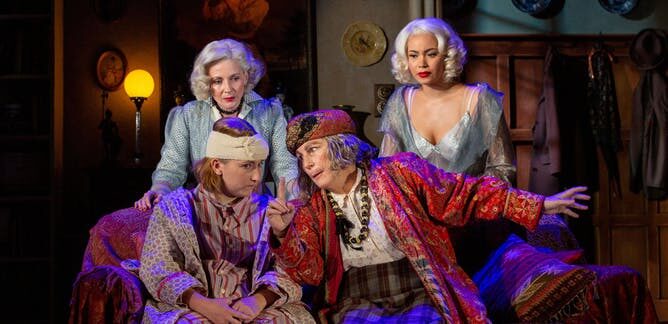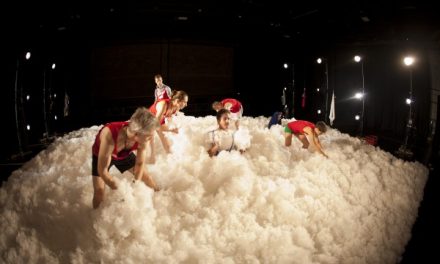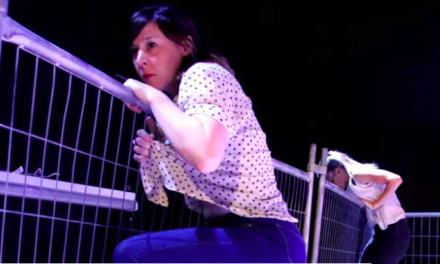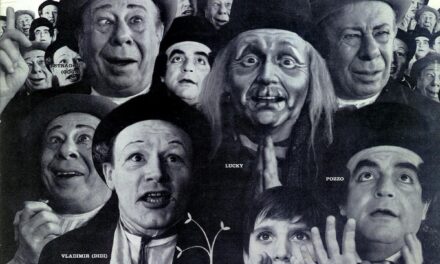The Creative Industries Federation projected a £74 billion drop in revenue with a loss of 400,000 jobs because of the pandemic. Even theatre impresarios Andrew Lloyd Webber and Cameron Mackintosh were forced to close their productions, resulting in many permanent job losses and hundreds of self employed actors and technicians taking an unwanted “rest”.
The government’s “Rethink. Reskill. Reboot.” campaign appeared to encourage people in the arts to re-train and find other jobs, inspiring an outcry from the industry. But in order to survive at all during this period, theatre did need to adapt, and notable examples of genius materialized, reimagining the genre entirely. The survival of theatre has depended on the creation of these new formats, and its future depends on further innovation.
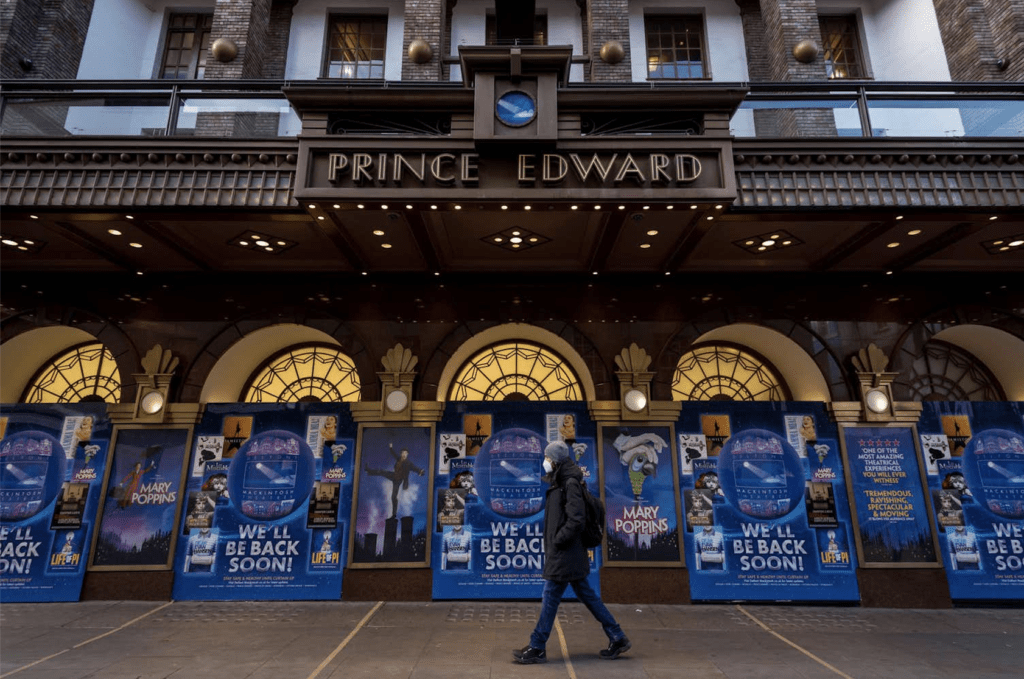
In 2020, theaters across the UK had to close their doors, suffering hugely from lack of funding and the inability to show live productions. Photo Credit: Stephen Chung/Alamy.
Immediately after lockdown closures, it became clear that the face of theatre would change, most evidently in the ability to gather together and create new material. “Back catalogue streaming”–the showing of old recordings of plays–dominated.
Lloyd Webber encouraged us to watch his early musicals, with Broadway soon following suit offering a “pay as you view” streaming service. Even publicly funded organizations like the National Theatre joined in with One Man, Two Guvnors.
While these streaming served as a suitable stopgap, audiences arguably thrive on live entertainment, relishing the excitement and proximity offered by it. Theatre and Netflix are not interchangeable. Back catalogue streaming is an excellent accompaniment to our thirst for theatre, but not a substitute.
Pre-recorded theatre productions, created in controlled conditions during the pandemic (initially free but now mainly pay per view) became the next streaming development, achieving some elements of “live” that back catalogue pieces lacked. These performances delivered a shared feeling of togetherness and provocation, the pieces uniquely filmed under similar circumstances to the viewers’ own caged existences.
This was an expensive process that did little to develop the genre in most cases. Indeed, the National Theatre demonstrated production costs outweighed streaming income.
But importantly, it did bring the world of theatre to a new locked down audience, with one in five seeing a digital production for the first time. If the legacy of lockdown theatre is engaging new audiences and minimizing exclusivity, it is a good one.
True innovation
Tackling the lack of intimacy and dynamism of online theatre became the next challenge, a problem that had to be overcome without box-office funding and full audience support.
The company Original Theatre refused to let isolation beat it, becoming a connoisseur of virtual theatre. The production Apollo 13 demonstrated a new form of theatre that intertwined actor-focused storytelling with green-screen technology, original film footage, and computer graphics. But the effects were not the focus, and audience imagination was encouraged throughout.
The digital concept was further developed into a live broadcast by Original Theatre through its production of Into the Night, which uses the digital effects with a live performance. This was a welcome experimentation, giving us an insight into the possibilities of this methodology, which may find its place as a future mainstream genre.
Apollo 13: The Dark Side of the Moon Trailer
Individuals, too, have demonstrated innovation in addressing the live problem. Rather than shying from new online environments, actor and author Robert Myles created The Show Must Go Online, a company that reimagined the complete plays of Shakespeare for Zoom. Myles featured actors from all over the world, live streaming weekly to an audience of over 200,000.
Similarly, Lockdown Theatre explored comedic table readings and exclusive chats with notable luminaries such as Emma Thompson and Emilia Clarke. Its productions, including The Real Inspector Hound and Waiting for Godot, became popular Zoom experiences and raised over £500,000 for the Royal Theatrical Fund.
The Show Must Go Online: The Merchant of Venice
Contact was an outdoor experience. No recordings, no onstage performances, just actors outside on the streets. The audience, plugged into an app with headphones, followed the actors. The soundtrack connected the audience to the actors’ inner feelings, blocking out real life sound interference. This enterprising use of technology enhancing creativity is equalled by All Kinds of Limbo, the National’s virtual reality experience.
As the UK moves into its “living with COVID” strategy and theatre comes back to full fore, it is important that the industry does not forget the creativeness spurred by lockdown, and instead uses the newly created techniques it has at its disposal. Such efforts are not an alternative, but an addition to future theatre performance.
Importantly, the need to take theatre online has resulted in global collaborations, accessible productions, and the incorporation of modern techniques to bring theatrical culture to anyone with a taste for it. For theatre to keep building, this momentum should be taken advantage of to ensure that the inclusivity and innovation of lockdown is not left behind.
This article was originally published by The Conversation on February 21st, 2022, and has been reposted with permission. To read the original article, click here.
This post was written by the author in their personal capacity.The opinions expressed in this article are the author’s own and do not reflect the view of The Theatre Times, their staff or collaborators.
This post was written by Stephen Langston.
The views expressed here belong to the author and do not necessarily reflect our views and opinions.

